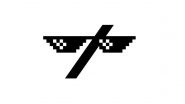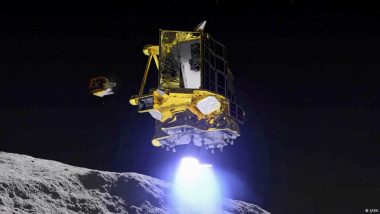For decades, the United States and Soviet Russia were the only countries that had landed on the moon. Then came China and India. Now, Japan is trying for the second time in 2023.A mere four months after Japan's first attempt to land on the moon ended in failure in April — it's tough to land on the moon — the country's hopes were set on a second attempt.
Also Read | Embryos from the Lab - Without Sperm or Egg.
Moon Sniper is the nickname for a small and light spacecraft that was designed as a "pinpoint" lander called SLIM. SLIM stands for Smart Lander for Investigating Moon, and scientists call it the sniper because of its precision.
Also Read | Aditya-L1 Spacecraft Takes Selfie, Images of Earth and Moon; ISRO Releases Video.
What is pinpoint landing?
Japanese officials say the idea is to go from an era of "landing where we can" to "landing where we want" on a celestial body with gravity, such as the moon. The moon's gravity is about one-sixth of Earth's gravity — its pull is weaker — which is why you can jump about six times as high on the moon as you can on Earth. And that has an impact on how spacecraft land on the moon's surface.
But it's about more than that. Since the beginning of human moon exploration in the 1960s, and the advent of advanced satellites and telescopes and other camera technology, researchers have gathered masses of high-definition images and other data, such as information about the moon's atmosphere. So we know more about the moon's constitution, including where we are likely to find water. Scientists want to land exactly where there is water, such as the south pole. Or, if they are interested in a specific rock on the moon, it's important that a spacecraft can land very close by on a flat piece of land.
How does pinpoint landing compare with conventional landing?
The landing precision of conventional landers can be anywhere between "several and a dozen" kilometers (1 kilometer = 0.62 miles). That's according to the Japanese space agency, JAXA, and its Institute of Space and Astronautical Science. Pinpoint landers aim to bring that range down to about 100 meters (330 feet).
How big is Japan's SLIM moon lander?
SLIM has a dry weight of 200 kilograms (440 pounds) and a boxlike shape and dimensions of 2.4 meters by 1.7 meters by 2.7 meters. The objective is to test lightweight vehicles to facilitate more frequent missions to moons and planets.
Does SLIM have a moon rover and cameras?
Yes. It has radar and a laser range finder to measure the altitude above the lunar surface before landing, and a navigation camera. SLIM uses this "vision-based navigation" technology to measure and correct its position for a pinpoint landing.
On the moon's surface, a multiband spectral camera will investigate the composition of rocks. To further investigate the land, a probe called a Lunar Exploration Vehicle can separate, including a Transformable Lunar Robot, nicknamed SORA-Q, which is the shape of a large egg and fits in the palm of a hand.
When will SLIM arrive at the moon?
The Moon Sniper / SLIM mission was first scheduled to launch on Monday, August 28, but that attempt was postponed due to strong winds. JAXA, the Japan Aerospace Exploration Agency, has now set a new launch attempt for September 7. The current launch "window" closes on September 15, 2023.
Once it does launch, the spacecraft will aim to arrive in a lunar orbit about three to four months later, remain in lunar orbit for a month, and then begin its descent to land on the lunar surface about six months after launch.
Edited by: M. Gagnon
This article was originally published on August 26, then updated when the launch was postponed on August 28, and again on September 5, to add a new launch date of September 7, 2023.
(The above story first appeared on LatestLY on Sep 07, 2023 07:00 PM IST. For more news and updates on politics, world, sports, entertainment and lifestyle, log on to our website latestly.com).













 Quickly
Quickly





















